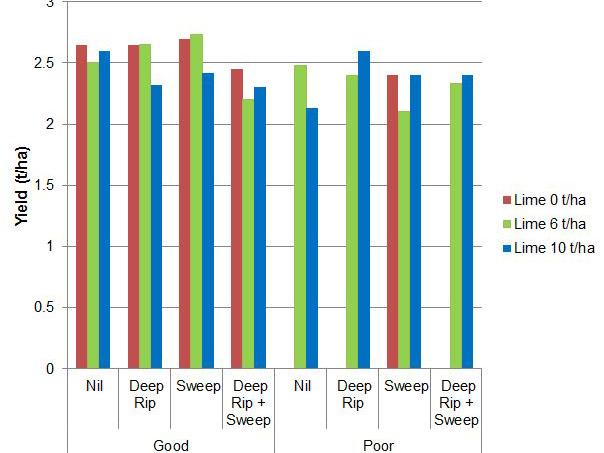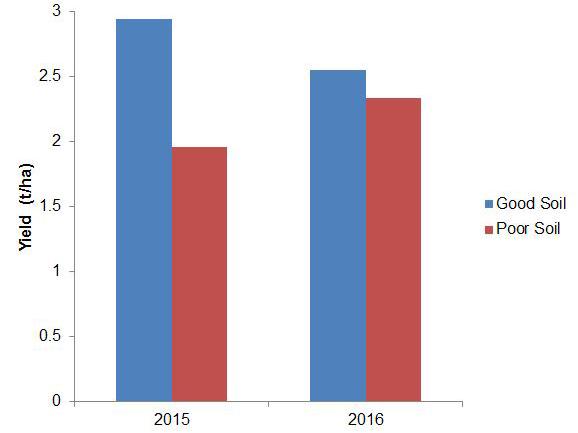Results
Note; pH discussed as pH (1:5 CaCl2)
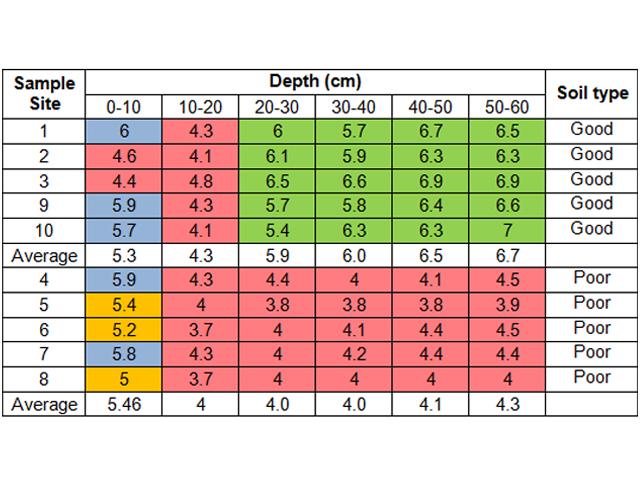
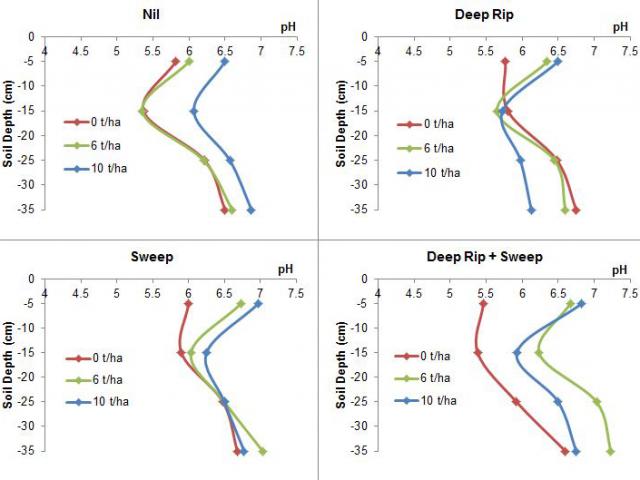
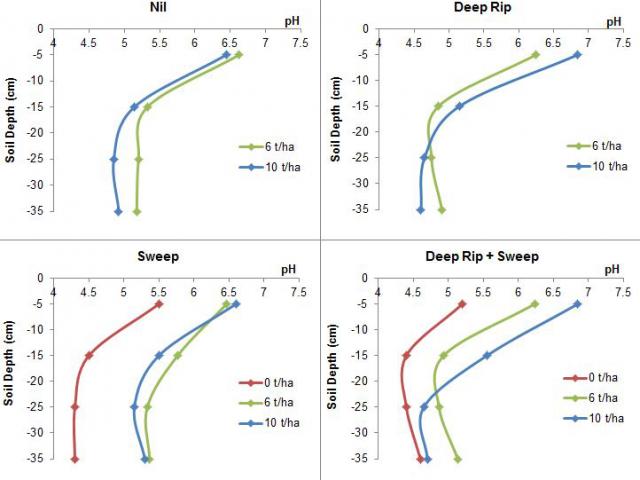
Comments
Two soil types are present within the East Yuna demonstration site (Table 1). The soils are best described as red loamy sand with good pH in the subsurface and red loamy sand with poor pH throughout the profile.
A good pH in the subsurface is above pH 4.8. Due to plot size it was not possible to have equal replication for each treatment in each soil type. Deep ripping x 0t/ha and Nil incorporation x 0t/ha were not within the area of poor soil.
Deep ripping treatment occurred prior to the application of lime and has not improved sub-surface pH (Figure 1).
To increase possibility of lime incorporation the ripping should occur after the lime has been applied.
While not used in this trial, slot openers can be added to the back of the deep ripper tine to allow topsoil to fall in behind and down to the depth of ripping improving the sub-surface pH.
The sweep and deep rip + sweep treatments have improved the subsurface pH (Figure 1 and 2).
Plants emerging within the area of the poor soil improved this season and were close to matching the plant numbers in the good soil area. Later in the season the head numbers of wheat were lower in the poor soil, this being one of the reasons for the lower yield in comparison to the good soil. However, the yield on the poor soil areas, in comparison to the good soil areas, has greatly improved since the previous season (Figure 4). This is starting to show the value of lime application and incorporation on targeted areas of soil with low pH.
Acknowledgements
Thanks to Kim and Jason Batten at Yuna for managing the trial; also to DAFWA technical services staff for their assistance and SoilTech for soil sampling.
This project is supported by the Northern Agricultural Catchments Council, through funding from the Australian Government’s National Landcare Programme.

